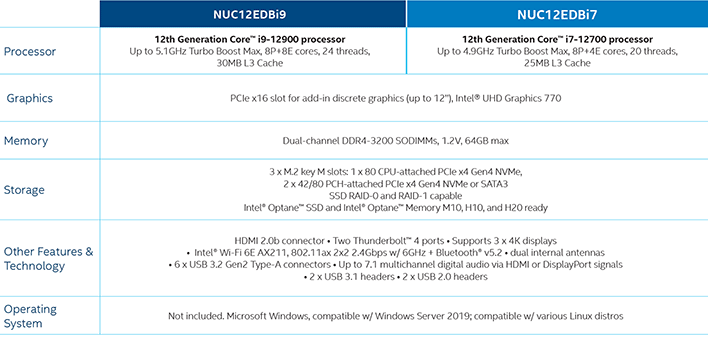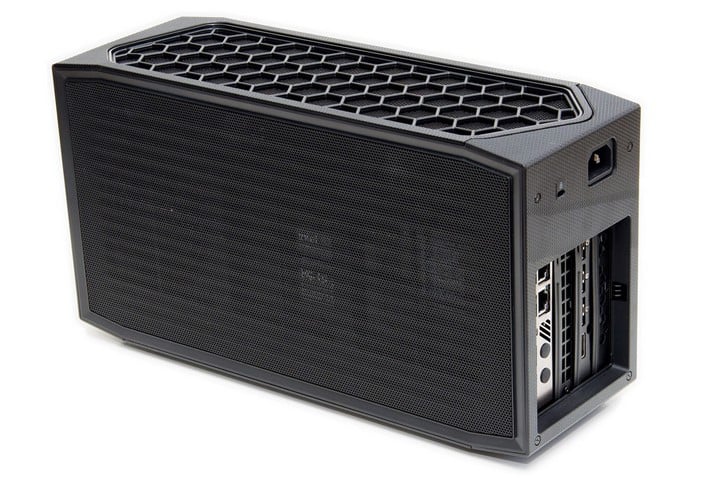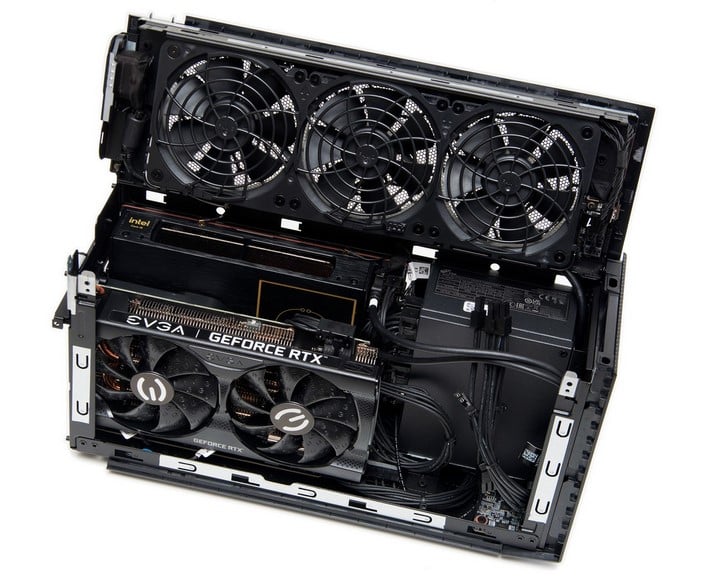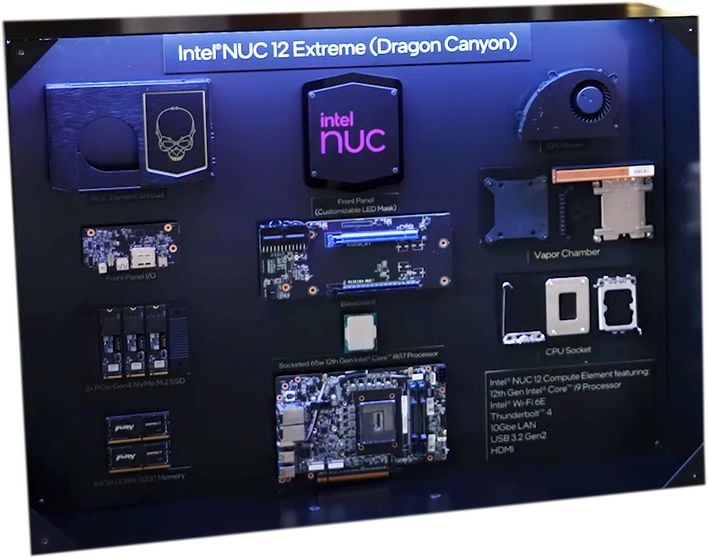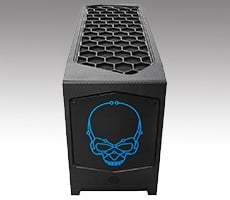Intel NUC 12 Extreme Dragon Canyon Mini PC Review: A Fire-Breathing Little Beast
We’ve got a Core i9-12900-based NUC 12 Extreme to play with today. This mini machine represents the top-end of the NUC 12 line-up, which will only consist of two models initially. The only difference between the two will be their CPU configurations though. The spec table below lists the systems’ highlights, but we’ll dig in deeper afterwards and see how the NUC 12 Extreme performs, of course. Let’s get started...
Intel NUC 12 Extreme "Dragon Canyon" Features & Specifications
The powerplant in the NUC 12 Extreme is determined by the included compute element. The higher-end NUC12EDBi9 features a Core i9-12900, while the more mainstream NUC12EDBi7 is powered by a Core i7-12700. The Core i9-12900 is a 16-core / 24-thread processor with 30MB of L3 cache a maximum boost clock of 5.1GHz, while the Core i7-12700 is a 12-coew / 2- thread CPU, with a max boost clock of 4.9GHz and 25MB of L3. Both processors are configured for a 65W base TDP.
Like the NUC 11 Extreme, the larger chassis design of the NUC 12 Extreme allows the system to accommodate full-sized, dual-slot wide graphics cards, provided the system’s integrated 650W power supply is up to snuff. The NUC 12 Extreme's chassis exterior also features addressable RGB lighting that illuminates a skull on the front and casts light out of the lower panel onto wherever the system is resting.
The NUC 11 chassis is vented all around, and has fans almost everywhere. There are three exhaust fans at the top of the system, the compute element is actively cooled, and the SFX-sized power supply situated at the front of the system has a fan as well. Plus, whatever graphics card is installed in the system will have its own fans, too. We built our system up with an EVGA GeForce RTX 3060 with dual cooling fans, so all told there were 7 fans in what is a relatively small system. Even though things are cramped inside the compact chassis, cooling and noise are a non-issue for the most part – we’ll dive deeper into cooling and acoustics a little later.
At CES, Intel had a display showing off the inner-workings of the system. Apologies for the somewhat blurry image, but it was snapped from a video the company posted on its YouTube channel. What you can see is that the compute element is essentially a system on a card, that plug into a separate PCB with the expansion slots and power connectors.
We configured our NUC 12 Extreme with an EVGA GeForce RTX 3060, 16GB of DDR4-3200 RAM (dual-channel), and a 250GB Samsung PCIe 4.0 M.2 SSD. It should be fairly speedy with these components, backed by the Core i9-12900. So, what do you say we get to some benchmarks?

